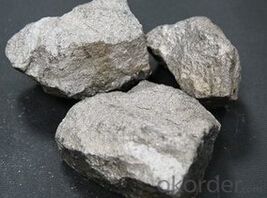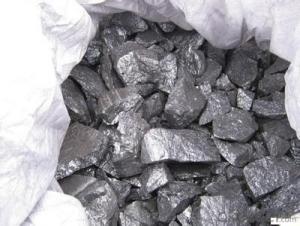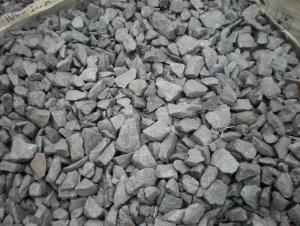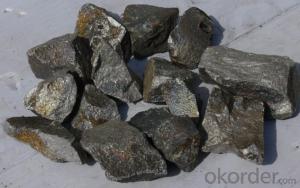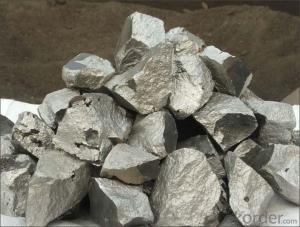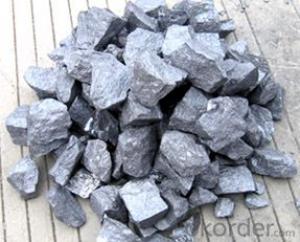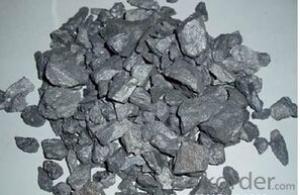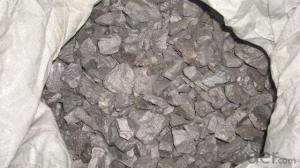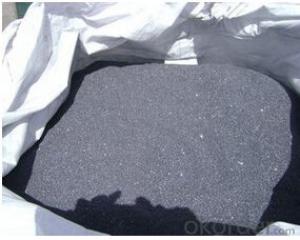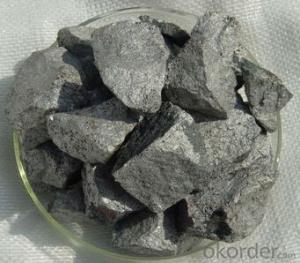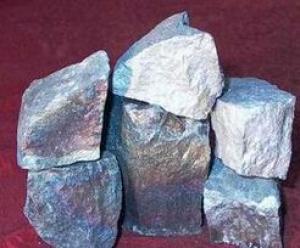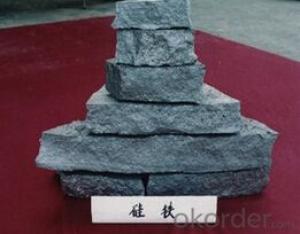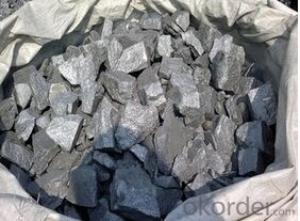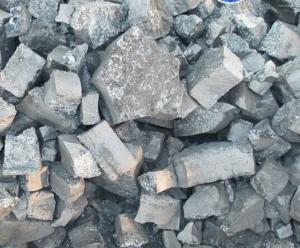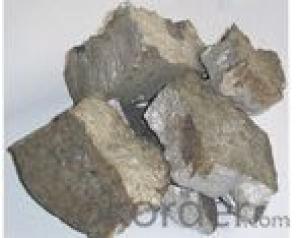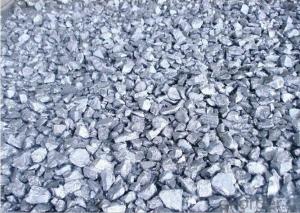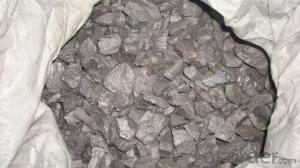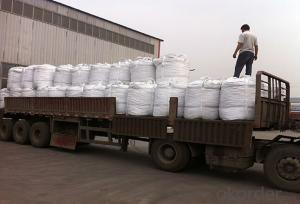FeMn/femn Used In Steelmaking
- Loading Port:
- China Main Port
- Payment Terms:
- TT OR LC
- Min Order Qty:
- -
- Supply Capability:
- -
OKorder Service Pledge
OKorder Financial Service
You Might Also Like
Specifications
1 Professional manufacturer
2 largely used in steelmaking
3 Inspection:CIQ SGS
1 Application
Ferromanganese a ferroalloy with high content of manganese, is made by heating a mixture of the oxides MnO2 and Fe2O3, with carbon, usually as coal and coke, in either a blast furnace or an electric arc furnace-type system, called a submerged arc furnace. The oxides undergo carbothermal reduction in the furnaces, producing the ferromanganese. Ferromanganese is used as a deoxidizer for steel.
2 Specification
Type | Brand | Chemical Compositions (%) | ||||||
Mn | C | Si | P | S | ||||
1 | 2 | 1 | 2 | |||||
≤ | ||||||||
Low-carbon ferromanganese | FeMn88C0.2 | 85.0-92.0 | 0.2 | 1.0 | 2.0 | 0.10 | 0.30 | 0.02 |
FeMn84C0.4 | 80.0-87.0 | 0.4 | 1.0 | 2.0 | 0.15 | 0.30 | 0.02 | |
FeMn84C0.7 | 80.0-87.0 | 0.7 | 1.0 | 2.0 | 0.20 | 0.30 | 0.02 | |
Medium-carbon ferromanganese | FeMn82C1.0 | 78.0-85.0 | 1.0 | 1.5 | 2.5 | 0.20 | 0.35 | 0.03 |
FeMn82C1.5 | 78.0-85.0 | 1.5 | 1.5 | 2.5 | 0.20 | 0.35 | 0.03 | |
FeMn78C2.0 | 75.0-82.0 | 2.0 | 1.5 | 2.5 | 0.20 | 0.40 | 0.03 | |
High-carbon ferromanganese | FeMn78C8.0 | 70.0-82.0 | 8.0 | 1.5 | 2.5 | 0.20 | 0.33 | 0.03 |
FeMn74C7.5 | 70.0-77.0 | 7.5 | 2.0 | 3.0 | 0.25 | 0.38 | 0.03 | |
FeMn68C7.0 | 65.0-72.0 | 7.0 | 2.5 | 4.5 | 0.25 | 0.40 | 0.03 | |
Application
1. Mainly used as alloy additives and deoxidizer in steelmaking.
2. Used as alloy agent ,widely applied to be widely applied to alloy steel, such as structural steel, tool steel, stainless and
heat-resistant steel and abrasion-resistant steel.
3. It also has the performance that it can desulfurize and decrease the harmfulness of sulfur. So when we make steel and cast iron, we always need certain account of manganese.
- Q: What does WC refer to in cemented carbides?
- Refers to: tungsten carbide powder, is the main raw material for the production of cemented carbide, chemical formula WC. Full name: tungsten carbide powder is black, six square crystal, has metallic luster, hardness is similar to diamond, it is good conductor of electricity and heat.
- Q: What kind of carbide alloy is used in stainless steel processing?
- Machine tool steel. Better cooling, liquid viscosity and sulfur chosen for good cooling performance, the pressure of the cooling liquid chlorine.
- Q: Compare the advantages and disadvantages of high speed steel and cemented carbide
- High speed steel, high carbon steel, can be divided according to chemical composition of tungsten and molybdenum in steel, cutting performance is divided into high performance of ordinary high speed steel, high speed steel. Through strengthening heat treatment of high speed steel.
- Q: Is carbide resistant to alkali?
- Hard alloy chemical composition are general acid-base stability, it has no effect on, also has strong alkali resistant corrosion resistant hard alloy sintered hard alloy is added in different metal powders, can improve the hard alloy for corrosion resistance
- Q: High end markets for cemented carbides
- The high-speed steel cutting tools are being reduced by 1% to 2% annually, and the proportion has been reduced to less than 30%.At the same time, the hard alloy cutting tools in China has become the main tool required for processing enterprises, is widely used in the production of auto parts, mold manufacturing, aerospace and other industrial fields, but our tool enterprises blindly, but a large amount of production of high speed steel and some low-grade standard tools, with no consideration the saturation of the market and enterprises need to end with high value-added, high-tech high-end tool market "over" to foreign enterprises.The data shows, our tool has annual sales of approximately 14 billion 500 million yuan, of which the proportion of hard alloy cutter is less than 25%, more than carbide tool but domestic manufacturing industry has occupied the required tool 50%, the blind production has serious domestic manufacturing industry can not meet the growing demand for hard alloy cutting tools, forming the vacuum in the high-end market, is dominated by foreign enterprises.
- Q: How to distinguish the authenticity of Zhuzhou diamond brand cemented carbide blade?
- In fact, now only look at the packaging has been unable to identify, because now the copycat alloy packaging has really not with what two things, want to know after the authenticity can be used, you can try to buy a small amount of alloy, the quality of clearance to buy a lot, you can go to the station to find the Alibaba China @ Rui Sen # trade. Easy% Co., reputation has been good, but sales of hard alloy Zhuzhou diamond factory, there are quality problems can return shipping.
- Q: What is the hardness of YG8 cemented carbide?
- The hardness of YG8 cemented carbide produced by Zhuzhou fine drill is 89.5, all of which are made of cemented carbide raw material
- Q: Will the alloy produced at 400 watts be decarburization or carburizing?
- This is not necessarily, the hard alloy sintering infiltration decarburization mainly in wet grinding your ingredients and carbon sintering process control, vacuum furnace gas in order to prevent the reaction of pure, alloy with oxygen in the air, infiltration and decarburization products have no direct relationship, of course if it is caused by the leakage of vacuum sintering furnace can not meet the requirements, will lead to the direction of decarburization alloy.
- Q: What kind of cemented carbide is used for processing HRC40 degrees stainless steel?
- It is recommended to choose YS8 welding tool. Very good processing quality can be obtained.
- Q: What is a hard alloy mixture?
- Tungsten carbide mainly consists of tungsten carbide + other small elements,
Send your message to us
FeMn/femn Used In Steelmaking
- Loading Port:
- China Main Port
- Payment Terms:
- TT OR LC
- Min Order Qty:
- -
- Supply Capability:
- -
OKorder Service Pledge
OKorder Financial Service
Similar products
Hot products
Hot Searches

